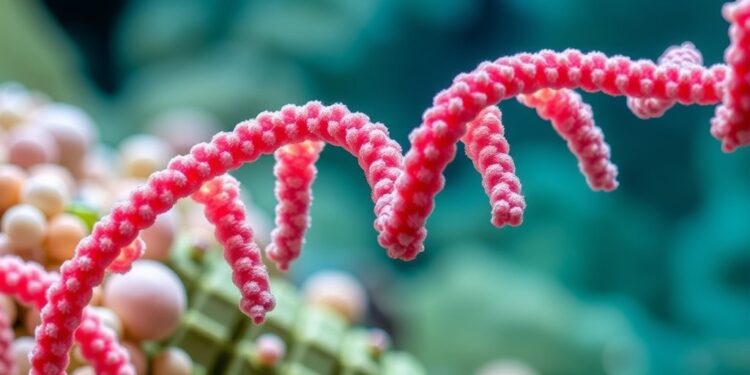
In a groundbreaking study that marks a significant advancement in our understanding of molluscan evolution, researchers have unveiled a meticulously constructed phylogenetic tree for the diverse phylum Mollusca. By mapping the complex family tree of mollusks, which includes everything from octopuses to snails, this comprehensive genomic analysis has resolved long-standing debates regarding evolutionary relationships and unveiled insights into how an astounding variety of species has arisen from a single common ancestor. The findings highlight the intricate patterns of evolution within one of the largest and most diverse groups of animals on Earth.
Mollusks are characterized by their remarkable morphological, ecological, and behavioral adaptations that span both terrestrial and aquatic environments. The phylum encompasses familiar groups such as bivalves, gastropods, and cephalopods, along with five lesser-known classes, which include the enigmatic worm-like mollusks, chitons, and deep-sea limpets. While it is clear that the eight extant classes of mollusks are descended from a common ancestral lineage, the determination of their evolutionary relationships has historically presented a complex puzzle due to conflicting evidence from both genomic and morphological studies.
To unravel these evolutionary mysteries, Zeyuan Chen and colleagues have presented a comprehensive phylogeny of living mollusks, which is built on genome-wide markers derived from an impressive array of 77 species. This dataset spans all major clades and incorporates multiple representatives from each of the eight extant classes within the phylum. The researchers did not merely rely on previously published genomic data; they expanded the scope of the study by assembling 13 new genomes that represent key taxonomic groups, including two nearly complete assemblies of the elusive deep-sea class Monoplacophora.
The findings of this extensive analysis suggest that mollusks originated in the Cambrian period, followed by a rapid divergence that gave rise to the major clades known as Aculifera and Conchifera. This rapid diversification is consistent with the fossil record and morphological hypotheses, which had suggested similar patterns of evolutionary development. Notably, the phylogeny identifies Monoplacophora as the sister group to all other members of Conchifera, a classification that highlights the ongoing complexities of molluscan evolution and the critical role that this lesser-known class plays in understanding the phylum’s history.
In a critical refinement of existing evolutionary theory, the study also confirmed that the class Cephalopoda, which includes squids and octopuses, is the sister group to a clade encompassing both Gastropoda and Diasoma, which includes Scaphopoda and Bivalvia. This revelation provides a more nuanced understanding of the evolutionary relationships among these diverse molluscan groups, which have seen substantial adaptive radiations over millions of years.
The researchers emphasize that the evolutionary trajectories of mollusks continue to be shaped by a dynamic interplay of genetic flexibility and environmental adaptation. This flexibility is reflected in the astonishing diversity of molluscan forms, demonstrating the power of evolutionary processes. Such findings underscore the importance of integrating genomic data with fossil records and morphological studies to elucidate the broader patterns of life on Earth.
An integral aspect of this research is its ability to bridge gaps that have long existed between molecular and morphological classifications, thus providing a clearer understanding of evolutionary history. The utilization of comprehensive genomic analyses allows scientists to fine-tune our understanding of life’s intricate tree, shedding light on the lineage connections that have, until now, remained ambiguous.
The implications of this research extend beyond the classification of mollusks, as they contribute to the broader discourse on evolutionary biology. The study emphasizes the interconnectedness of life forms and the evolutionary processes that drive biodiversity. It serves as a reminder of how small changes in genetic makeup over time can lead to the emergence of vastly different forms and behaviors, further illustrating the ongoing narrative of evolution.
Scientists anticipate that this genomic advancement will spur further inquiries into other complex animal groups, leading to a more integrated view of the tree of life. Given the ever-growing capacity for genomic sequencing, researchers will continue to explore the molecular underpinnings of evolution, offering fresh insights into the origins and adaptations of a wide array of species.
As the researchers conclude, the study not only reaffirms the Cambrian origin of mollusks but also opens doors to future explorations of evolutionary processes. In a world increasingly shaped by rapid changes, understanding the evolutionary past of organisms like mollusks will inform conservation efforts and guide our responses to environmental shifts. The robust dataset generated from this study can act as a foundation for further research, spurring an enrichment of knowledge that contributes to our shared understanding of life’s complexity.
In summary, the detailed phylogenomic analysis of the Mollusca phylum reveals the intricate and rich evolutionary history of mollusks, illuminating the relationships between living species. This research serves as a critical juncture in evolutionary biology, enabling scientists to draw connections across species and enhance the narrative of life’s evolutionary tapestry, all while highlighting the ongoing journey of scientific discovery.
Subject of Research: Phylogenomic analysis of the Mollusca phylum
Article Title: A genome-based phylogeny for Mollusca is concordant with fossils and morphology
News Publication Date: 28-Feb-2025
Web References: Science DOI: 10.1126/science.ads0215
References: None provided
Image Credits: None provided
Keywords: Mollusca, phylogeny, genome, evolution, biodiversity, cephalopods, gastropods, bivalves, Monoplacophora.
Tags: adaptations in mollusksbivalves and gastropodscephalopods and their relativescommon ancestor of mollusksdiversity of molluscan speciesevolutionary history of mollusksgenomic analysis of mollusksgenomic markers in evolutionary studiesmolluscan evolutionary relationshipsphylogenetic tree of Molluscaresolving evolutionary debates in mollusksterrestrial and aquatic mollusks





